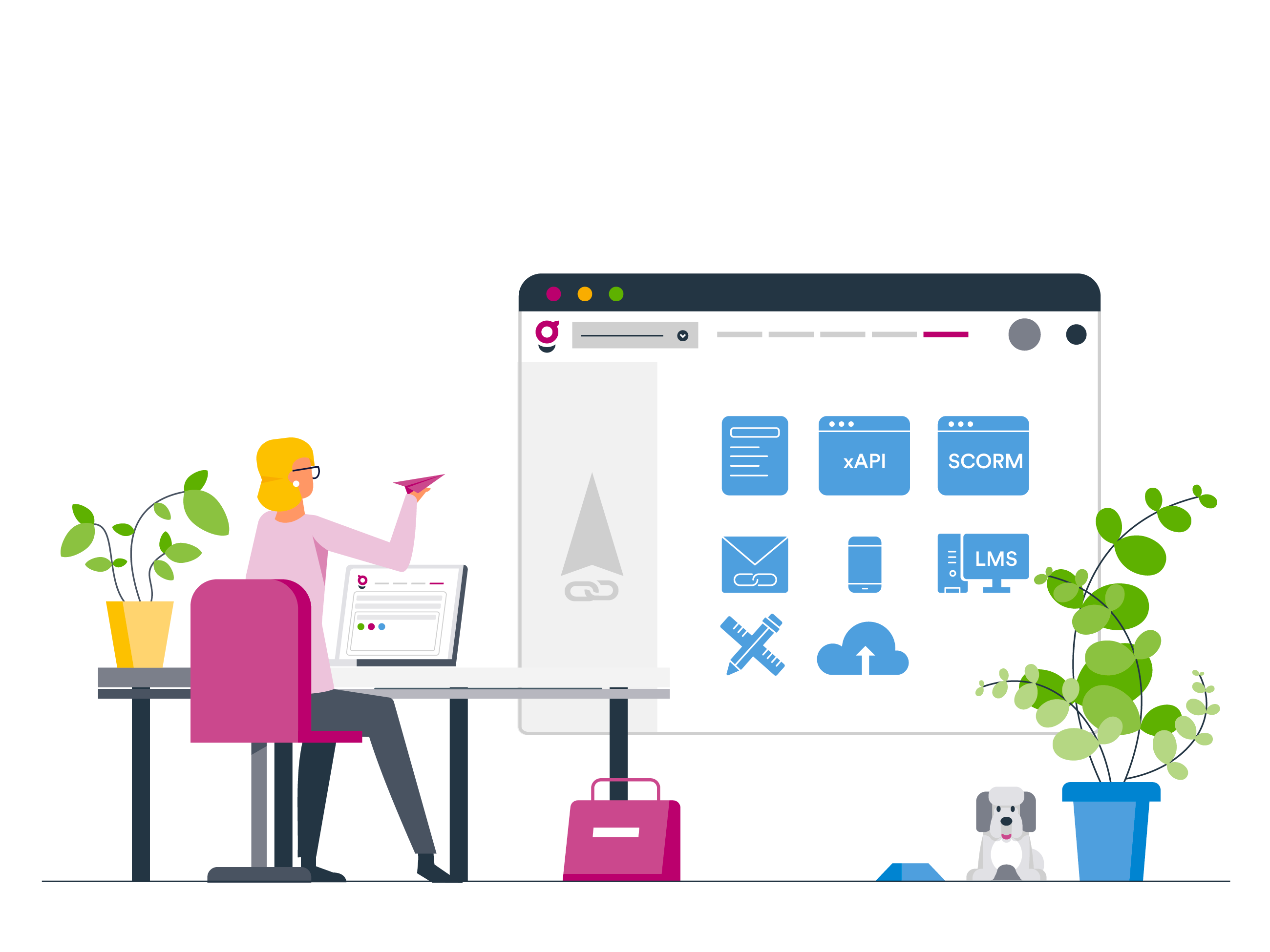If you design or develop eLearning modules, or you manage an LMS, you’ll be familiar with the SCORM standard already, and the familiar refrain “Is it SCORM compliant?”.
But in recent years, you might have been hearing more and more about something called ‘xAPI’ as an alternative to SCORM.
So what’s all the fuss about xAPI? Why does it seem like a lot of people are talking about it, but few people are doing anything about it?
And, are the claims true? Can xAPI get you closer to the holy grail of learning — evidence of Return On Investment (ROI)?
Let’s have a look.
What are SCORM and xAPI ?
They’re both technical frameworks that work ‘behind the scenes’ of your eLearning to keep track of what your learners are doing. They both record start and completion dates, results and scores to support your reporting requirements.
But that’s about where the similarity ends.
SCORM has been around a long time (in technology terms) and is pretty set in its ways — the latest release was 15 years ago! It goes hand-in-hand with delivering learning on an LMS, and it captures the basic start, completion and scoring data. If that’s all you need, SCORM will do the job, and do it well.
On the other hand, xAPI (also known as Tin Can) has an anytime-anywhere attitude, delivering learning wherever it makes the most sense, whether that be on an LMS, a website, a phone, or classroom. Its flexibility is its greatest strength.
There are heaps of things xAPI can do that are critical to understanding the effectiveness of learning. Here are just a few:
-
It records what your learners are doing inside the learning. Like how many times they attempted a question before they got it correct; whether they scrubbed through a video instead of watching it; or whether they clicked on a link.
-
It understands that learning is often about people and relationships. For example, it can be used to record learning activities that happen in teams or groups; or to track the interactions that happen between a learner and their coach or mentor.
-
It supports personalisation. Everyone is time-poor these days. By personalising learning you make the most of the time that learners have by making sure what they are doing is relevant to them.
Which one do you need?
If all you need to do is track completions and scores on an LMS, then you can use either.
SCORM will capture simple data like completions, scores, pass/fail and duration via the LMS on a desktop. If your LMS has an app, it will track on phones and tablets too. If you’re all about compliance training, it’s more than likely that SCORM will give you what you need.
Here are 4 reasons why you should switch from SCORM to xAPI
-
You want to deliver and track a range of learning via a range of delivery approaches
SCORM will only track learning that happens on your LMS. xAPI will work in almost any context, tracking learner experiences whenever and wherever they happen.
-
You need to capture detailed learning behaviours for greater insights
SCORM can only track basic outcomes like course completions, time spent in courses and quiz scores. xAPI can collect much deeper data about your learners’ interaction and performance.
-
You want to offer personalisation
If you want to offer a truly tailored experience using data collected throughout the learning journey, you will need something more than SCORM.
-
You need to track face-to-face, blended and informal learning activity
It’s flexible enough to record almost any learning activity, from face-to-face training courses, team activities, webinars, podcasts, mentoring and coaching sessions to short courses and micro credentials. In fact any learning, anywhere.
How to switch from SCORM to xAPI
If you’re not publishing in xAPI and you’d like to, you’ll need:
-
A Learning Record Store (LRS) to store, access, and report on the learning data you’ll collect. Some of the LRSs currently on the market are Learning Locker, Watershed and Yet Analytics.
-
An xAPI compliant authoring tool to create xAPI-enabled eLearning.
Not all eLearning authoring tools allow you to publish in xAPI. If you’re shopping around, look for one with xAPI embedded into the product, rather than one where you have to create your own xAPI statements. It’ll make producing your digital programs much quicker and easier.
If you’re using Guroo Pro, you just need to republish your old SCORM-compliant file in xAPI. Simple!
If you work with an external learning partner to develop your learning content, make sure they can create xAPI content.
What was that about ROI?
Because xAPI can collect much more data than SCORM ever could, it can give you in-depth insights into your learners’ behaviour, responses and needs.
With all that information at your fingertips, you can understand how your learning is influencing on-the-job performance in much more detail. Its flexibility allows you to correlate your training data with other datasets in your organisation - like sales data, or employee satisfaction data.
Not only that, but those insights can be used to improve your digital learning and the learner’s experience itself.
Sounds like the way to your project sponsor’s heart!
And if you use an authoring tool that makes it quick and easy to create and recreate xAPI eLearning, even better.
Ready to explore xAPI?
If you’re thinking of switching over to a quick and easy to use xAPI authoring tool, have a look at our Guroo Pro learning design platform.

.png)

